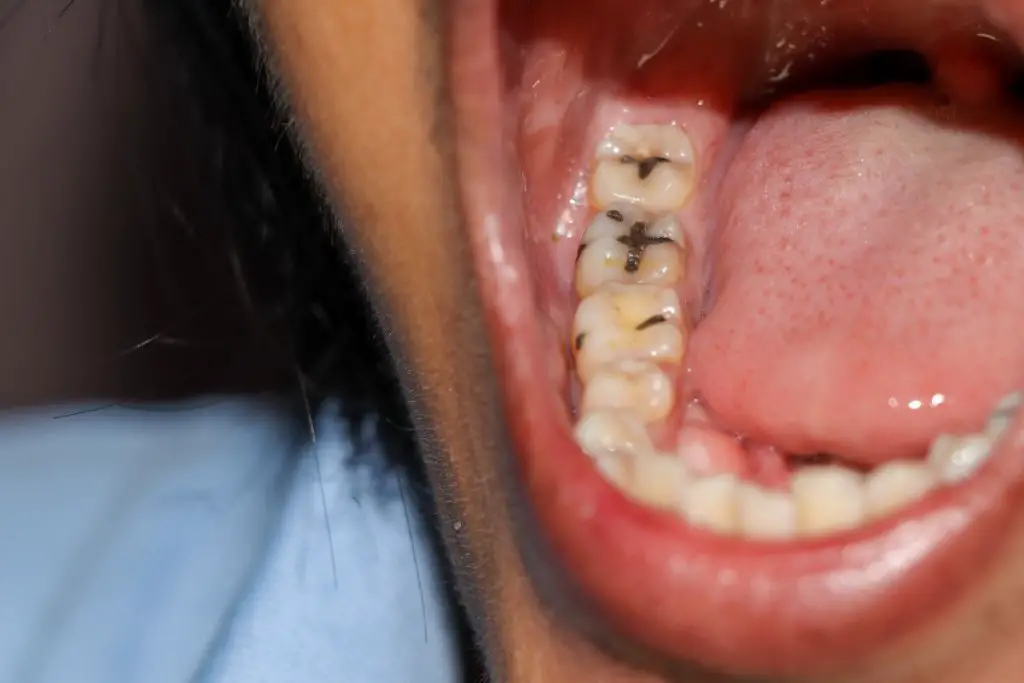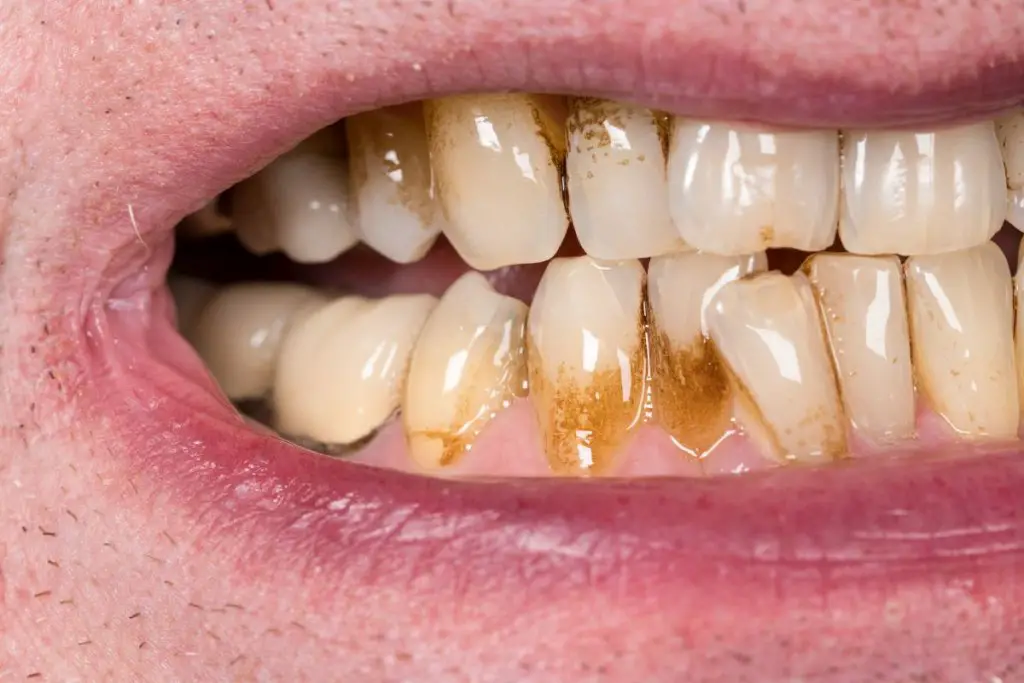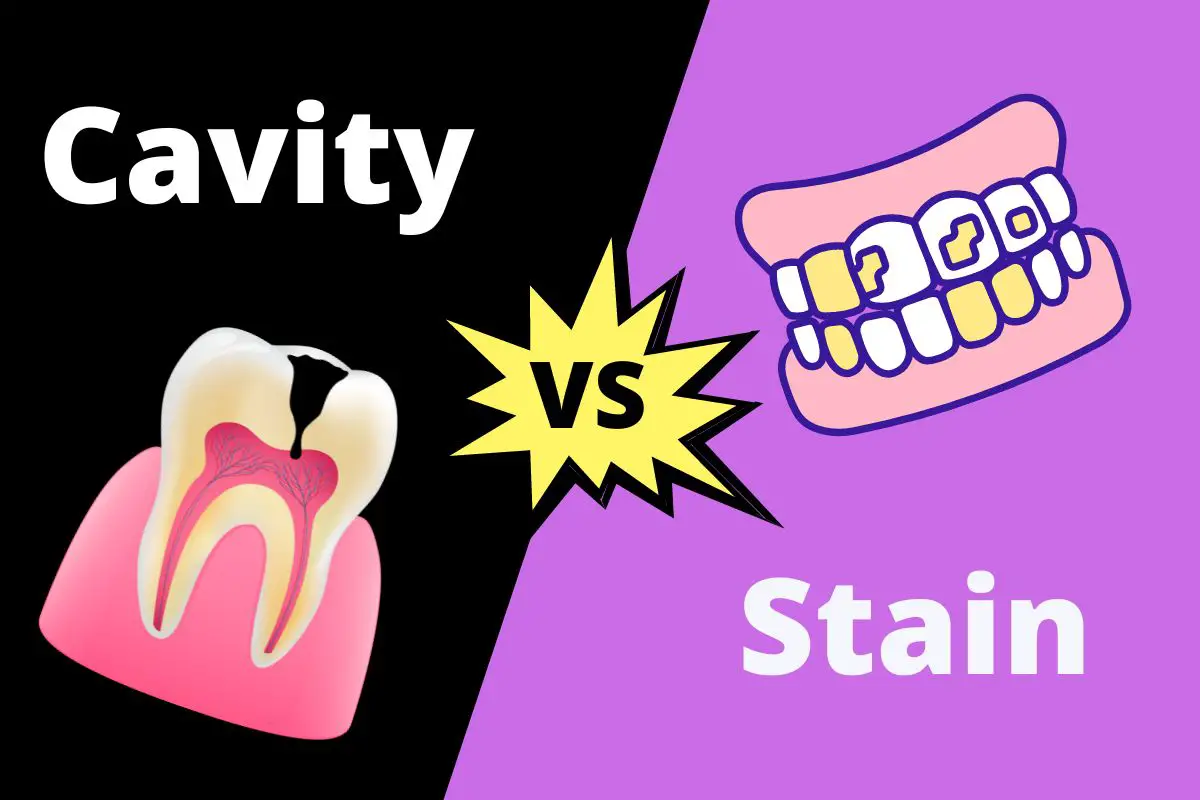A cavity is a section of tooth that has been irreversibly damaged and needs to be filled to stop germs and other microbes from entering. A stain is a dark spot on the tooth that forms when saliva and food particles build up and are not thoroughly removed by brushing.
Nothing is scarier than looking in the mirror and witnessing a dark spot on the surface of your tooth or experiencing shooting tooth pain. It can often leave you wondering what kind of dental issue you face and whether you must consult a dentist.
Table of Contents
What is a Cavity?
Plaque and tartar accumulation eventually causes tooth decay, which results in cavities. A cavity is a gap that enables microorganisms to erode teeth by entering them quickly. It’s a section of the tooth that has been irreversibly damaged and needs to be filled to stop germs and other microbes from entering.
There are two types of cavities. The first cavity has degenerated, while the second type is a lesion cavity that is harder to see with the naked eye or even by the experts of the dentistry world.

Causes of Cavities
Food crumbs and germs cling to them whenever you clean or floss your teeth. It is what leads to the accumulation of plaque, which in turn causes tooth decay. Tartar eventually develops on the buildup of plaque when it becomes problematic.
Tooth decay and cavities rank among the worst dental diseases since they can have a severe negative impact on both your body and mouth. Touching a cavity may be excruciatingly uncomfortable. Moreover, it can lead to gum diseases that weaken and damage the tooth’s root.
What is a Stain?
Tooth stain or tooth discoloration is very common. A stain is a dark spot on the tooth that forms when too much saliva and food particles are not thoroughly removed by brushing. Stains on the teeth can occur quite rapidly due to a cavity or dental decay.
Additionally, halitosis and periodontal disorders can cause tooth stains. They can cause discoloration to teeth, making them look paler, darker, or of various shades.

Cavity vs Stain: What’s the Difference?
| Cavity | vs | Stain |
| A gap in teeth, can start with white, demineralized spots that eventually turn dark | Appearance | Discoloration between the gum and the teeth |
| Aging, family history, diseases, and medical situations | Causes | Sugary foods, red wine, dry mouth, acid reflux, and genetics |
| Fixing a crown or removal of the affected tooth as per the severity of the situation | Treatment | Bleaching or cleaning of the stained tooth |
Symptoms
The symptoms of tooth cavity include visible holes and a bit of sensitivity in the affected area when touched and persistent toothache that interferes with speaking, swallowing, and even sleeping. Also, bad breath can be another noticeable symptom of tooth cavities.
When it comes to a stain, the main symptom is discoloration of the tooth and the appearance of dark color on the gums in between the teeth. The causes of tooth stains can be anything from age to other medical issues.
Appearance
Tooth decay can cause a tooth’s enamel to erode. It can get worse and resemble a cavity by darkening or turning brown. A cavity can actually demolish a portion of a tooth. Cavities can appear brownish and can turn black if left untreated.
On the other hand, if you see a region of your teeth that is darker than the surrounding teeth, you may have a stain. A tooth stain differs from a cavity because it depends on whether you consume foods, beverages, or medications that can stain your teeth. Poor dental hygiene can also cause teeth staining.
Although less apparent than cavities, you can often find tooth stains in between teeth. Teeth with discoloration or stains are typically between other teeth. Additionally, stains will seem darker than the remainder of your teeth.
Dental Treatment
Only a dentist can tell you how severe a cavity is. Your dentist will decide if you can keep your tooth with the help of a root canal or whether the entire tooth needs to be pulled.
Treating a Cavity
The dentist will probably clean your teeth and then use a drill to extract any rotten pulp. When the pulp is removed, you may experience some discomfort. The tooth will then be carefully cleaned by the dentist with water and dried with air.
If there is significant damage to your tooth, your dentist may advise getting a dental crown or filling placed. These procedures restore your tooth’s structure and form with a filling and use a crown, a metal or plastic cap used to protect the roots of your teeth. Crowns and fillings help close gaps between teeth and returns your tooth’s natural form.
Also, the dentist will polish the teeth on both sides and work to align them so that the surface is consistent.
Treating Stains
Your dentist can weigh in on how to treat stains as well. To remove stains from your teeth, your dentist may use a chemical. This substance could also lessen dental decay or cavities. Your dentist may advise bleaching or teeth whitening, which includes using a small quantity of highly potent chemicals to whiten your teeth.
Does Toothpaste Make Cavities Disappear?
Fluoride applications such as toothpaste with a high fluoride content help to remineralize tooth enamel and guard against cavities. According to some findings, toothpaste with high fluoride prevents cavities more efficiently than toothpaste with low fluoride.
What Is The Best Way To Clean Your Teeth?
The best way to maintain good oral hygiene is to follow the steps mentioned below:
- Use only a soft-bristled toothbrush and a whitening toothpaste with fluoride to brush all surfaces of your teeth gently. Change the toothbrush after every three to four months.
- Use short back-and-forth strokes and little circular movements.
- Along your gum line, brush lightly and with caution.
- To keep sure your mouth is clean, gently brush your tongue or use a tongue scraper.
- Use dental floss, a water flosser, or a comparable tool to clean in between your teeth. They can help remove plaque and residual meals that a brush can’t reach.
- After you floss, rinse properly.
Remember that properly taking care of your teeth can help you avoid cavities and stains and maintain optimum dental health. If you’re interested in learning more about oral hygiene, check out our post comparing the differences between clots and dry sockets.

